#dowager empress marie feodorovna of russia
Explore tagged Tumblr posts
Text

“Minnie” and “Greek Minnie”
Grand Duchess Maria Georgievna (née Princess of Greece and Denmark) with her aunt, Empress Maria Feodorovna (née Princess Dagmar of Denmark), early 1900s
#maria georgievna#greek Minnie#maria feodorovna#empress maria feodorovna#dowager empress marie feodorovna of russia#minnie#danish royal family#greek royal family#early 1900s#princess maria of greece and denmark
24 notes
·
View notes
Text
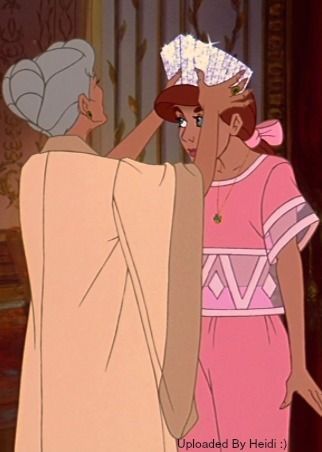
“You have the beauty of your mother, Alexandra. Empress of all Russia.”
I thought that line was really sweet - especially when you consider that in real life, the Dowager Empress Marie Feodorovna and the Tsaritsa Alexandra allegedly didn’t get along.
It’s admirable that the filmmakers included a line that involved women supporting each other!
On a more shallow note, I’ve always coveted Anya’s pyjamas in this scene. One day, I’m determined to recreate them!
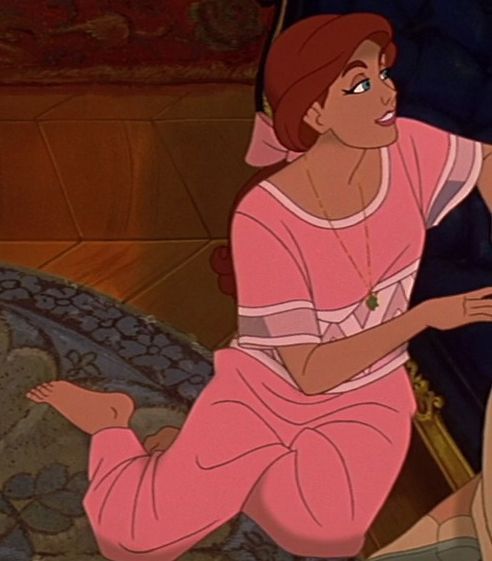
19 notes
·
View notes
Text

The 1997 Anastasia movie, while most likely being most people’s introduction to the Romanov Family and their history, was incredibly inaccurate.
Here are some of those inaccuracies
In the first opening moments, of the film we see the Dowager Empress Marie Feodorovna boarding the carriage to go to the ball. The footman greets her as Your Highness. In fact, the Dowager Empress addressed as Your Imperial Highness (there was a huge difference as Princess and Princesses were only entitled Your Highness.)
The Romanov Tercentennial was in fact 1913, not 1916.
In 1916, as the movie claims, Anastasia is 8. In fact, Anastasia was born in 1901, making her actually 15 at the time of the ball.
When we see Anastasia greet her grandmother at the ball, Marie Feodorovna wears a wedding ring on her left hand. In Russian Orthodoxy, the wedding band is worn on the right hand.
When the ‘evil’ Rasputin party-crashes the ball, Nicholas tells him he is a traitor. In the time Rasputin spent with the family, there was never any evidence that he betrayed them. He offered them his support, albeit for questionable reasons, but was only sent away for a short time by the Tsar under pressure from his ministers.
The raid of the Winter Palace occurred well into 1917, not 1916 as portrayed in the film. By this time, Nicholas had already abdicated (March of 1917) and they were imprisoned first at the Alexander Palace, then in the Governor’s mansion in Tobolsk, before being moved to the Ipatiev House in 1918, where they were ultimately murdered. The murder of the imperial family did not happen until two years after the ball in the film.
When Anastasia runs back to her room to retrieve her music box, we see the room to be rather “royal-looking” with a single large bed in the corner. Anastasia shared a room with her older sister Marie for all of their childhood, and their beds were in fact camp-beds; hard and not as luxurious as other royalty’s of the time.
Ten Years Later, 1926, Anya leaves the orphanage for a job at the fish market. When Anastasia reaches the fork in the road, the sign says Saint Petersburg. During the Great War, St. Petersburg was renamed Petrograd, a less German-sounding name. After communist leader Vladimir Lenin died in 1924, it became Leningrad, when it did not become Saint Petersburg again until 1991. Throughout the film this inaccuracy is repeated, most significantly in the song Rumor in Saint Petersburg. One would think even the peasants would be accustomed to a new name of their city after 10-15 years.
When Anastasia reaches the train station, the station guard wears the red cap with the Soviet crest. This crest wasn’t used in fact until the 1930s. It was only 1926.
A number of times, the peasants and Dmitri call her The Princess. In Russia, this would have been a great offense to her title, as Anastasia had always been, a Grand Duchess. The title Princess ranks significantly under Grand Duchess
Anya, is in fact a Russian nickname for Anna, not Anastasia. Anya was the name of her mother’s lady-in-waiting and close friend Anna Vyrubova. Anastasia’s nickname was Nastya, Nastia or shvibzik “imp”.
In 1926, the Catherine Palace was being used as a museum and its park area was open to the public, not quite as run down as in the film.
It wasn’t also the Imperial Family’s home, as suggested; they preferred the comfort and privacy of the Alexander Palace at Tsarskoe Selo, a little while outside the city.
When Olga, Tatiana and Marie come down to dance with their sister during the song, they all look to be around the same height. In truth, Anastasia was much shorter than her sisters. Tatiana was the tallest in the family, standing at around 5’9
The same mistake was made with Nicholas. When he and Alexandra come out of the portrait, he looks to be much taller than Alix; he, like his daughter, was actually rather short, only about 5’6, and stood around the same height as his wife.
When Bartok watches Vlad, Anastasia and Dmitri leave the ball room, he says All the Romanovs are dead. This simply wasn’t true. In 1919, around 30 Romanovs managed to escape via various methods, including the Dowager Empress Marie Feodorovna.
On the boat to France, Rasputin attempts to force Anya to jump off the side of the ship. She dreams she sees her father, sisters and brother playing in water. Nicholas calls her “Sunshine”, which was actually the nickname of her little brother, Alexei.
In this same dream, Alexei jumps from the top of the cliff down into the water. It was well-known that Alexei had a severe type 2 case of hemophilia, and there was no way Nicholas nor any of the sisters would have allowed him to make such a dangerous leap.
When the gang are journeying to Paris, they hope to meet the Dowager Empress. In 1926, Marie was actually living in Denmark, after the death of her beloved sister, Queen Alexandra of England the year before.
When Anastasia meets Sophie, she is asked how she likes her tea. Anastasia tells her she doesn’t like tea. But there have been many anecdotes of the real Anastasia drinking tea in the mornings and afternoons with her sisters and parents. (This of course may have changed as she aged).
When Dimitri refers to Anya and the Dowager Empress as ‘your grace’ this title is also incorrect. “Your Grace” was commonly used only amongst non-royal dukes and duchesses, and archbishops of the United kingdom.
When Vladimir announces ‘we have found the heir to the Russian throne’, this is completely innacurate. Even as the closest surviving member to the last Tsar, Anastasia would, sadly, have no right to the throne. There were around 30 dynastic members of the family surviving in 1926, and many available males. In Imperial Russia, the line of succession was strictly male-primogeniture; the eldest son would inherit the throne. In 1926, by law, this male would be the Grand Duke Cyril Vladimirovich.
The Dowager Empress could not have possibly had the means to offer a 10 million ruble reward for the return of her granddaughter. The Romanov fortune had all but disappeared and she largely relied on the charity of the English and Danish Royal Family.
The biggest inaccuracy, however, was that Anastasia survived. She, along with the rest of her family, were murdered by the Bolsheviks in 1918

#russian history#tsarist russia#anastasia romanov#anastasia 1997#film history#historical inaccuracies
23 notes
·
View notes
Text
Irina Alexandrovna Romanova (1895 -1970)
When Grand Duke Alexander Mikhailovich married Grand Duchess Xenia Alexandrovna (sister of the then Tsarevich Nicholas Alexandrovich), he was marrying one of the best matches in Europe: Xenia was the daughter of the Tzar Alexander III and the sister of the future Tzar Nicholas II. She had been in love with "Sandro," her second cousin, since childhood (and he saw no reason to discourage her affections, of course)
Sandro and Xenia had seven children. Irina was their first child and only daughter. This beautiful, quiet, delicate child was the first grandchild of Alexander III (who died the year before she was born) and would be the only biological niece of Tzar Nicholas II.

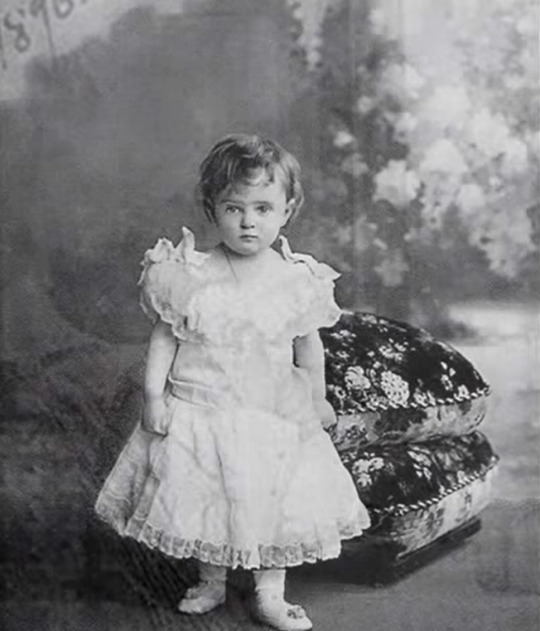
During the first few years of their respective marriages, the Tzar and Empress Alexandra and Grand Duke Alexander and Grand Duchess Xenia spent a lot of time together, and their daughters Olga and Tatiana, and Irina being very close in age, spent a lot of time together and developed a relationship. Distance would later grow between the couples and the children.
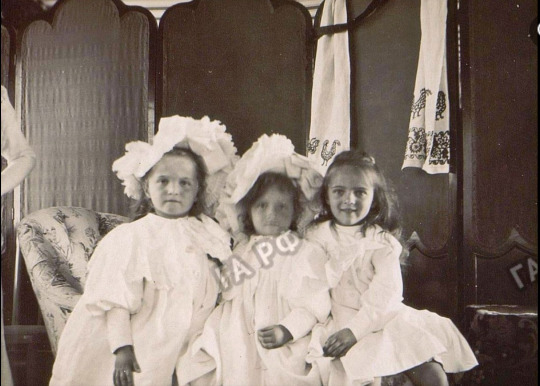
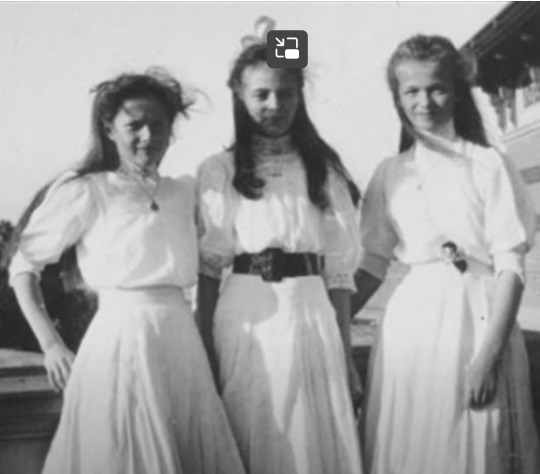
By the time Xenia was pregnant with her seventh child, her marriage to Sandro had gone sour. Sandro had fallen in love with a French/Spanish woman and was having an affair with her. Subsequently, Xenia started an affair of her own. Some sources say that they managed to keep their marital problems from their children; others that their quarrels might have had something to do with Irina's decision to marry Prince Felix Yusupov when he asked.
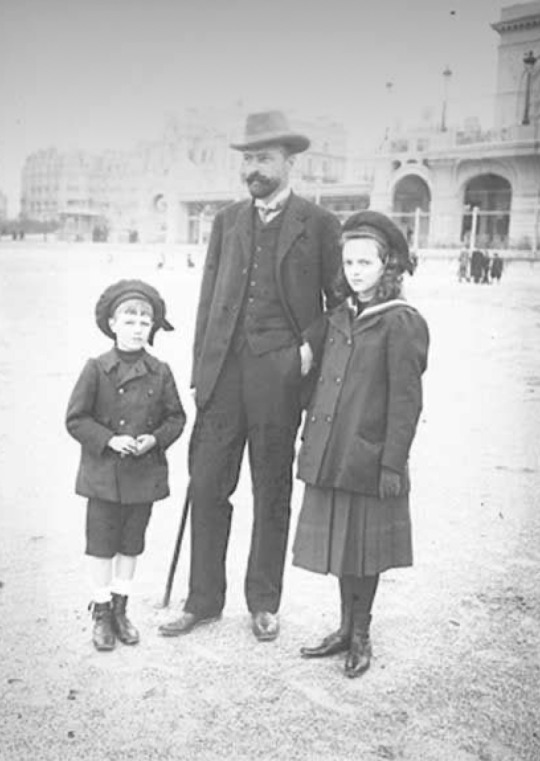

Felix was handsome, extremely smart, and one of the richest men in Russia, but he had a reputation. Irina accepted him as a bridegroom regardless of her parents' misgivings. Felix had a wild youth which seemed to include affairs with men and women. He enjoyed dressing as a woman and wearing his mother's jewels; apparently, he even caught Edward VII's eye at some point. When the Dowager Empress Maria Feodorovna talked with him about this behavior before his marriage to Irina, he did not deny it. Still, he said that his wild days were over, and he was very much in love with Irina.


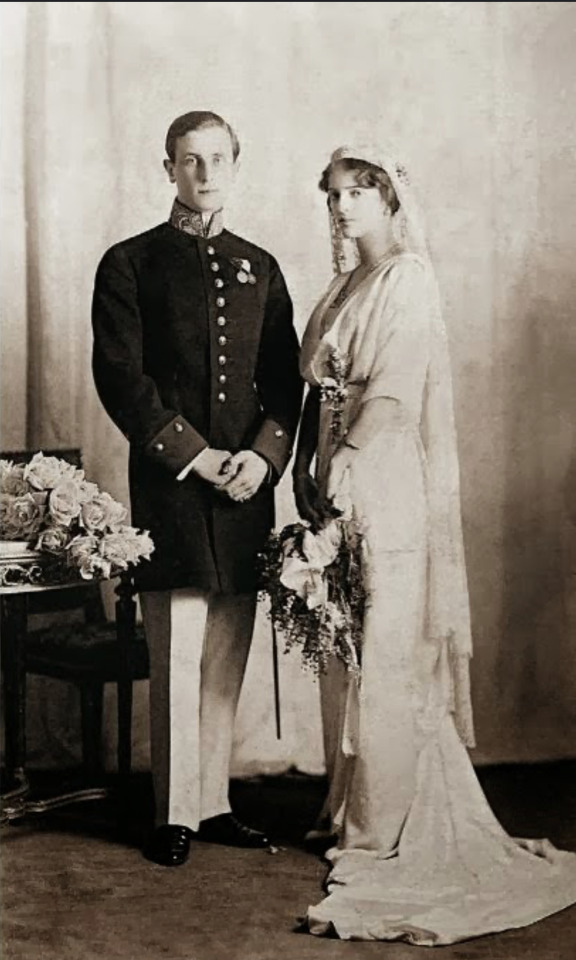
Irina had no qualms about signing away succession rights for their future progeny when she married Felix, who was not royal (their marriage was morganatic.) She married him wearing a veil that had belonged to Marie Antoinette. Both looked beautiful. Their wedding was the last grand happening (1000 guests) before the Great War.
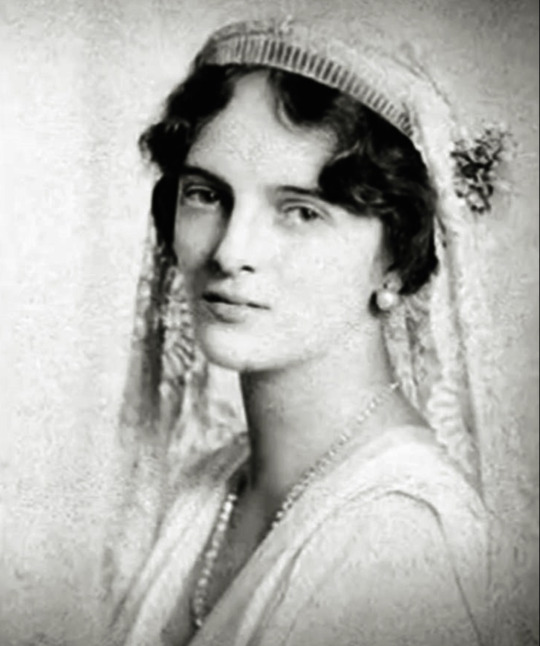
Felix and Irina were out of Russia when WWI started and had difficulty passing through Germany to return to Russia.
The Yusupovs settled in a section of Felix's parents' Moika Palace. Felix and Irina had one daughter (whom they named Irina but called "Bebe") and helped the war effort in Russia by opening two hospitals and a sanatorium in their Crimean state of Koreiz.
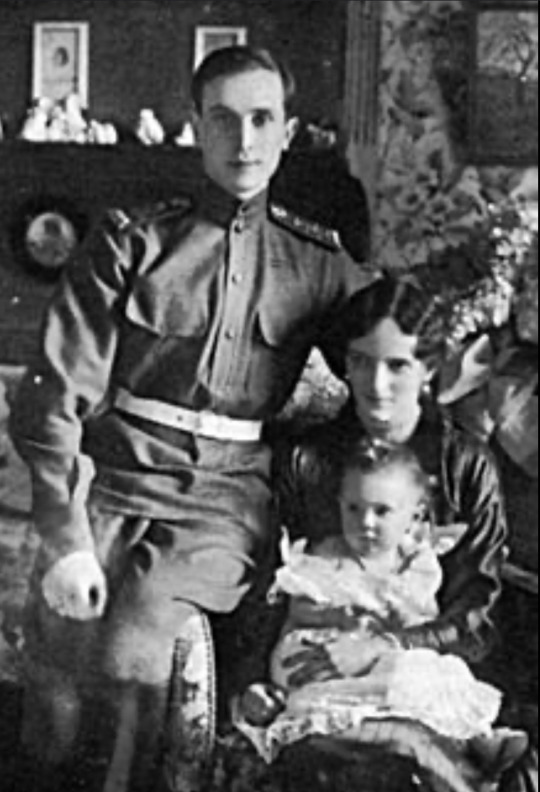
Felix would go on to kill Rasputin (he was banished to Koreiz by the Tzar) in a misguided effort to help the dynasty survive. As things in Russia became worse. A group of members of the Imperial Family, including the Dowager Empress, Irina's parents and brothers, and several Grand Dukes and their families, avoided being imprisoned and murdered by seeking shelter in Crimea. The Russians held them, prisoner until the Treaty of Brest-Livtosk was signed. Interestingly enough, the Germans liberated them. They left Russia in a warship sent by England to rescue the Dowager Empress.
They lived in an apartment Felix had in London; they had also smuggled out paintings and jewelry. There was a car they had not used in years waiting in a garage in Paris. The couple was extremely generous to the Russian Community and gave a lot to the exiles in need. They eventually bought a mansion in Paris and opened a couture house in Paris, which was very successful for a few years.


Felix and Irina lead an expensive lifestyle, and their couture business went bankrupt (after significant success.) By 1934, as luck would have it, Metro-Goldwyn-Mayer released a film named "Rasputin and the Empress." Felix sued the company for slandering Irina and won the lawsuit. He also released two books which did very well.
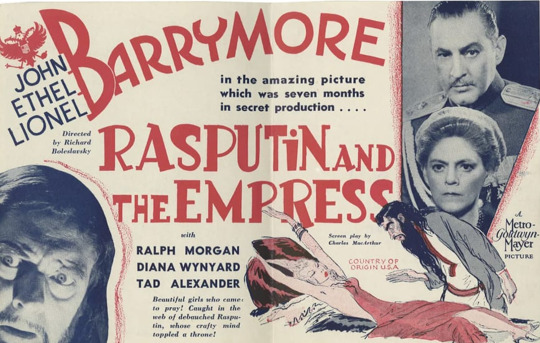
After this, the coupled lived a quiet life (for them), supporting young artists and attending various functions of the Russian emigre community.
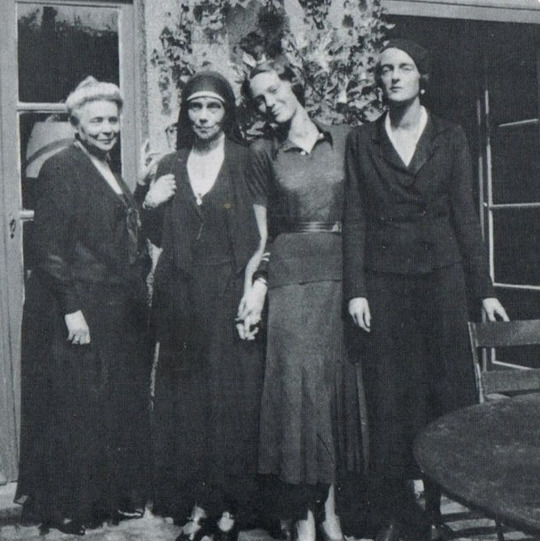

Irina remained close to all her relatives and helped them whenever she could. Her father, Grand Duke Alexander Mikhailovich, died in her arms.
Felix's and Irina's marriage turned out to be a great success. They were married and lived together, supporting and caring for each other for over fifty years. When Felix died in 1967, Irina was grief-stricken. She died three years later.
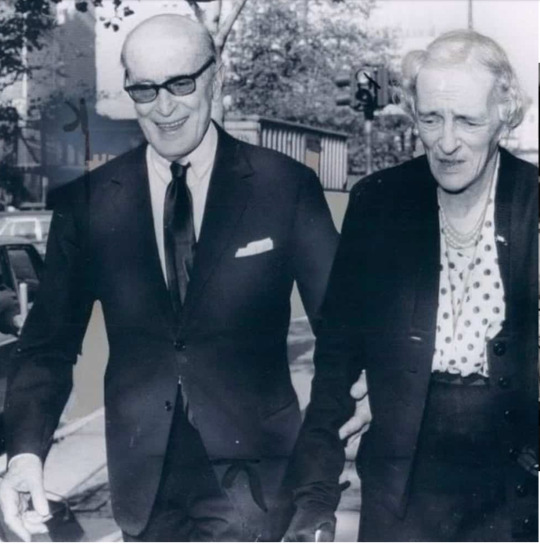

#russian history#romanov dynasty#Imperial russia#NAOTMA#Grand Duchess Xenia Alexandrovna#Princess Irina Alexandrovna#Prince Felix Yousupov#IRFE#Grand Duke Alexander Mikhailovich
94 notes
·
View notes
Text
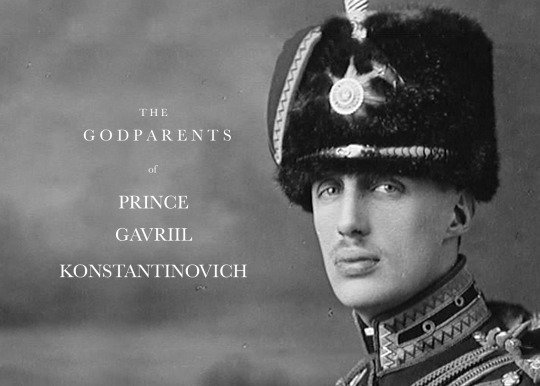


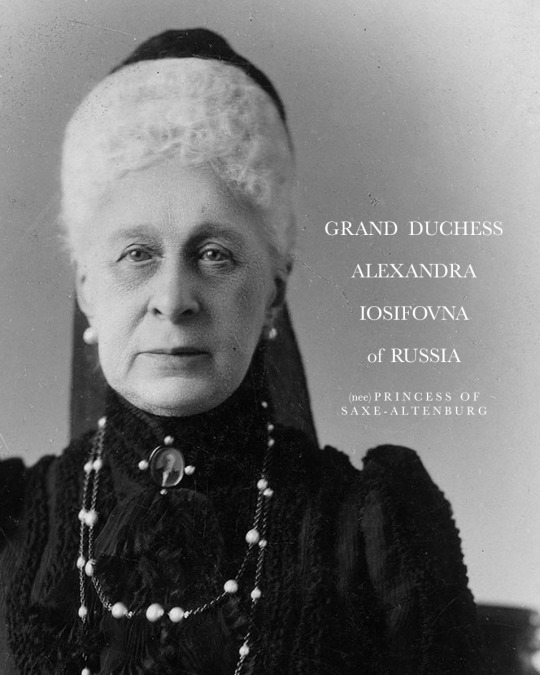
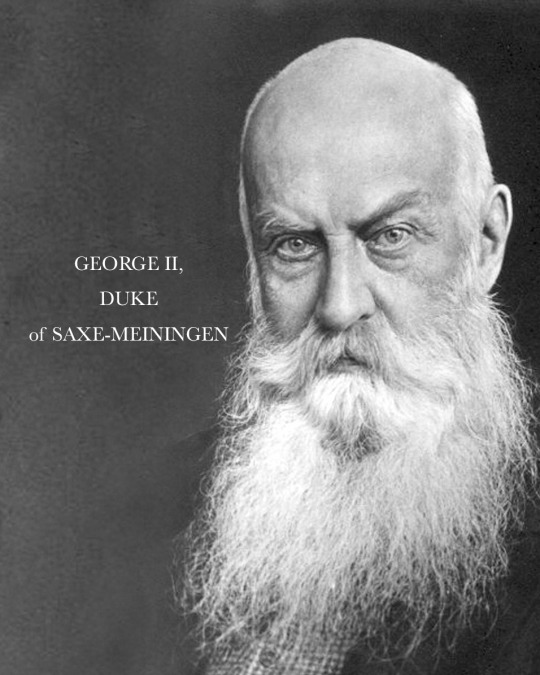
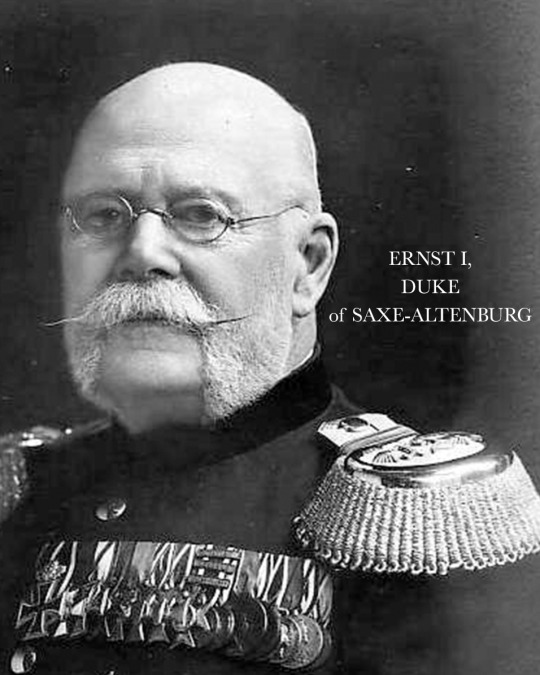
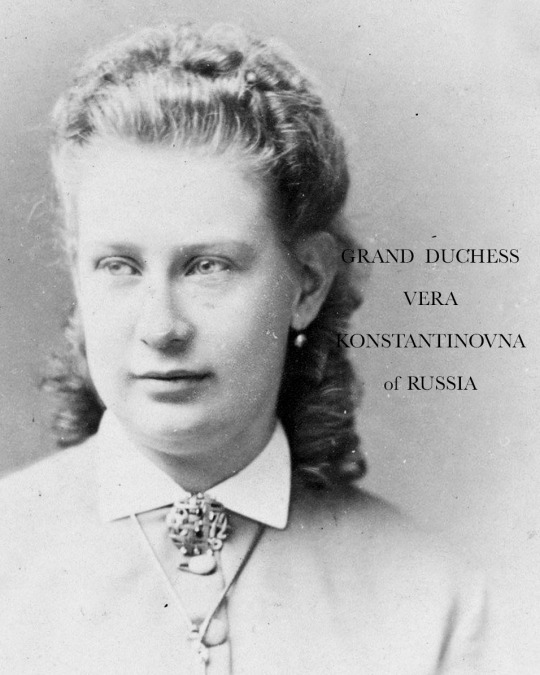

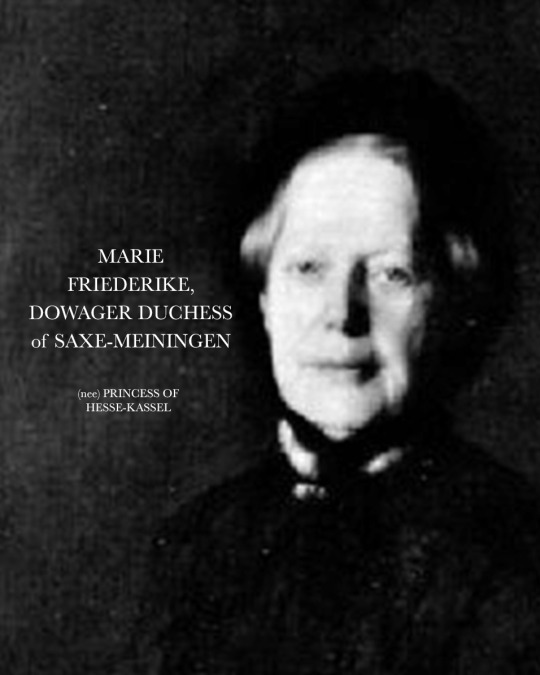
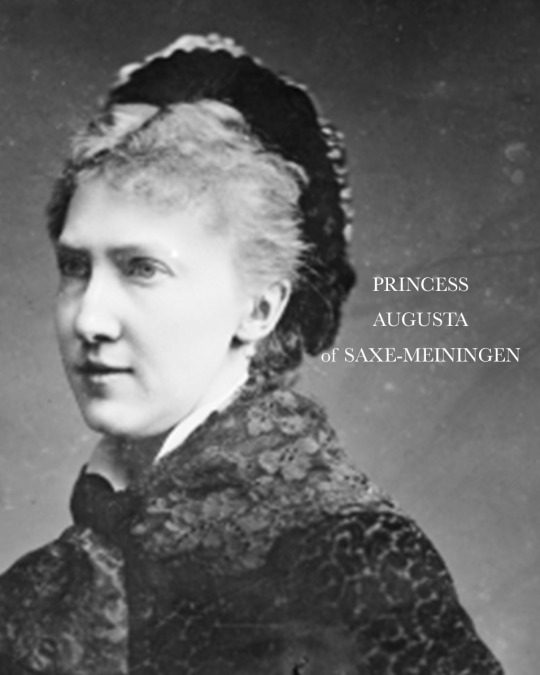
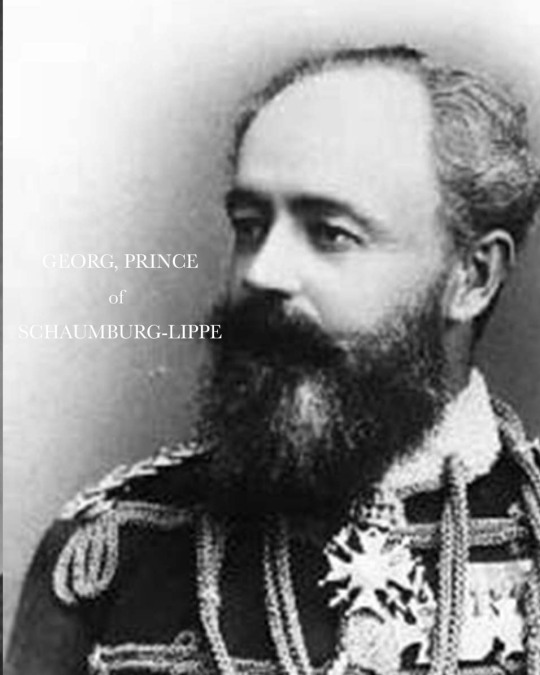
GODPARENTS OF PRINCE GAVRIIL KONSTANTINOVICH
Prince Gavriil Konstantinovich was born on 15 July 1887 in the Grand Bedroom of Empress Maria Feodorovna at Pavlovsk Palace, Saint Petersburg. The second son of Grand Duke Konstantin Konstantinovich of Russia and his German-born wife Grand Duchess Elizabeth Mavrikievna, he was christened on 8 August at 1:30 pm at a private church of Pavlovsk. His godparents were:
ALEXANDER III, EMPEROR OF RUSSIA - his father’s first cousin was named as one of his many godparents. He was highly reactionary in domestic affairs and reversed some of the liberal reforms of his father, Alexander II. He was most likely present at his young cousin’s christening.
GEORGE I, KING OF GREECE - his uncle, the husband of Queen Olga Konstantinovna, was one of his godparents. Born a Danish prince, he was elected king by the Greek National Assembly, when he was only 17. His reign of almost 50 years (the longest in modern Greek history) was characterized by territorial gains as Greece established its place in pre–World War I Europe.
GRAND DUCHESS ALEXANDRA IOSIFOVNA OF RUSSIA - his paternal grandmother, born a German princess, was listed as one of his godparents. Married to Grand Duke Konstantin Nikolaevich of Russia in 1848, she was considered a beautiful woman, but plagued by insecurity. Within the family, she was later known to be a formidable character.
GEORGE II, DUKE OF SAXE-MEININGEN - his maternal great-uncle, was the penultimate Duke of Saxe-Meiningen, reigning from 1866 to 1914. He was likely present, having been named as one of his young nephew's godparents.
ERNST I, DUKE OF SAXE-ALTENBURG - a paternal great-uncle named as a godparent of the young prince, was the reigning Duke of Saxe-Altenburg from 1853 until 1908. He was of a retiring disposition and he took little active part in running the country, of which he ruled for fifty-five years.
GRAND DUCHESS VERA KONSTANTINOVNA OF RUSSIA - one of his paternal aunt, Vera was known in royal circles as an eccentric both in appearance and behaviour. She was named as one of Gabriel's godparents, and was present at the christening. Although she kept in touch with her Romanov relatives, visiting Russia many times, she identified more closely with her adopted country, Württemberg.
GRAND DUKE DMITRI KONSTANTINOVICH OF RUSSIA - his paternal uncle, and his favourite, was also one of his godparents. He followed a military career, and was religious. He never married, and was one of several Romanov relatives executed by a firing squad at the walls of Peter and Paul Fortress during the Russian Civil War.
MARIE FRIEDRIKE, DOWAGER DUCHESS OF SAXE-MEININGEN - his maternal great-grandmother was one of his godparents. Born a Princess of Hesse-Kassel, she married the Duke of Saxe-Meiningen, with whom two children (seventeen years apart) were born.
PRINCESS AUGUSTA OF SAXE-MEININGEN - his maternal grandmother was absent at her grandson's christening, of whom she was named as one of his godparents. In 1862, she married Prince Moritz of Saxe-Altenburg, and bore him five children.
GEORG, PRINCE OF SCHAUMBURG-LIPPE - the husband of his maternal aunt, was also absent at the young prince's christening but was named as one of his numerous godparents. He ruled the small Principality of Schaumburg-Lippe within the German Empire from 1893 to 1911.
Source
14 notes
·
View notes
Note
What were the appearances of Nicholas I's daughters? What were the physical characteristics of Maria, Olga and Alexandra? And who was the sister who was considered the most beautiful, majestic, and admired in Europe? And of course, which daughter of Nicholas and his wife Alexandra did he find most beautiful?
Hi! Here are a few firsthand accounts for you:
“The three princesses, Olga, Marie, and Alexandrine enchanted me more than any beauties have for a long time. They are surely the most beautiful creatures I've ever seen. Olga is really imperially proud--a great beauty; Alexandrine is the highest loveliness, delicacy, and grace. Marie is the least beautiful, but interesting and the most lively of the three.” —Robert Schumann
“Grand Duchesses Olga and Alexandra Nikolaevna were of such amazing beauty that, in my opinion, they had no rivals in the aristocratic world at that time.” — Count Mikhail Buturlin
“The Grand Duchess Olga Nikolaevna, beloved of all the Russians; it is indeed impossible to imagine a more lovely face, which would express such a degree of gentleness, kindness, and tolerance. She is very slim, her face translucent, and her eyes have that unusual sparkle which poets and lovers describe as heavenly […] The very youngest grand duchess, Alexandra [���] still has something of the child in her; she is very lively and mischievous, and is promising to be the most beautiful of all the sisters.” — Dutch General Friedrich Gagern
“Little Marie is grace personified.” — Dowager Empress Maria Feodorovna of Russia
“She [Maria]was prettier, the butterfly had fluttered out of the cocoon. Her resemblance to Papa was now particularly pronounced, and in profile she seemed his miniature… She combined a strict classical face with lively facial expressions. Her forehead, nose, and mouth were completely regularly, her shoulders and chest were perfectly developed, and her waist was so slender that the band from her Greek coiffure would fit around it.— Queen Olga of Württemberg
“She [Maria] is a bit taller than me, a miniature as to features of her father... she is very lively, and has much frankness and abandon in her manner, & certainly is attractive.” — Queen Victoria
“My little Oline [Olga] is without question the most beautiful child you could hope to see.” — Dowager Empress Maria Feodorovna of Russia
“The Grand Duchess Olga, the second of the Emperor's daughters, has no rival in beauty amongst the princesses of Europe; and in this instance, flattery, in asserting her to be the loveliest girl in her father's dominions, scarcely outstrips the truth.” — Charles Frederick Hennigsen
“… a tall and slender blonde, a perfect beauty, with the profile of a cameo and big blue eyes. It was the middle daughter of the empress, Grand Duchess Olga Nikolaevna, subsequently the Queen of Wuerttemberg, one of the most beautiful women in Europe.” — A.I. Sokolova
“The answer to the ordinary vulgar question of which of the three grand duchesses (Maria, Olga, and Alexandra Nikolaevna) was most beautiful is very difficult to say, but in my opinion, the Grand Duchess Alexandra Nikolaevna stood above her sisters in this respect because her beauty was unearthly, like a creature doomed by Providence to leave this world in her youngest years.” — Prince Alexander Vasilyevich Meshchersky
“Alexia [Alexandra] is certainly a remarkable child, as beautiful as the day and so good.” — Dowager Empress Maria Feodorovna of Russia
“The three young Princesses were the most beautiful of all the family: Marie, her father's favorite, blonde with blue eyes and a delicate complexion, small, rather thin, recalling to mind the Great Catherine, not only by her fine profile, but also by certain traits in her spontaneous, impulsive, and sensual nature; Olga--a beautiful, noble, pale figure, slender and elegant, with a spiritual expression, and superb black hair framing the absolutely pure oval of her face; finally Alexandrine, the youngest, with a long neck and narrow chest, lively, teasing, a frail and fragile figure full of grace and childish gaiety, generally considered to be the living portrait of her mother.” — Constantine de Grunwald
“Mary is in the giraffe stage, is pale and thin, but has charming characteristics and will be a delightful individual; Olly has kept her kind of face but is getting thin and growing a lot; Adini is very small and very mischievous, but I do not think she is pretty in spite of others' opinions.” — Emperor Nicholas I of Russia (16 February 1828)
30 notes
·
View notes
Text









Sisters Queen Alexandra of the United Kingdom and Dowager Empress Maria Feodorovna of Russia in the conservatory at Hvidøre House, their residence.
Following the death of their father, Christian IX of Denmark, they purchased Hvidøre House, a villa outside Copenhagen. After 1917, the Empress lived here permanently until her death in 1928.
These photographs were taken by Mary Steen in 1908, most take place in the conservatory, while others at the drawing room. The last photograph shows a meal in the dining room with the two sisters along with Princess Victoria, daughter of Queen Alexandra, and Grand Duke Michael Alexandrovich, son of Empress Marie. In some, you can see their dogs, probably Japanese Chins, moving or resting.
9 notes
·
View notes
Text

Group Photograph in Denmark 1896
Standing: Alexandra, Princess of Wales; Prince Waldemar of Denmark; Dowager Empress Maria Feodorovna of Russia; Tsar Nicholas II of Russia; Queen Louise of Denmark; Princess Victoria of Wales holding Prince Viggo of Denmark; Marie, Princess Waldemar of Denmark.
Seated: Prince Aage of Denmark; King Christian IX of Denmark holding Princess Margaret of Denmark; Empress Alexandra Feodorovna holding Grand Duchess Olga Nikolaevna of Russia; Prince Erik and Prince Axel of Denmark.
#alexandra feodorovna#olga nikolaevna#nicholas ii#Alexandra of Wales#Queen Louise of Denmark#maria feodorovna#Prince Waldemar of Denmark#Princess Victoria of Wales#Viggo of Denmark#Princess Waldemar of Denmark#Aage of Denmark#King Christian IX of Denmark#Margaret of Denmark#Erik of Denmark#Axel of Denmark#1896
9 notes
·
View notes
Photo

#Repost @the.art.diary The Marriage of Nicholas II, Tsar of Russia, 26th November 1894 (1895-6) By Laurits Tuxen (1853–1927) The wedding between Nicholas II and Princess Alix of Hesse took place in the Imperial Chapel of the Winter Palace on 26 November 1894, just over twenty years after the marriage of the Tsar's aunt in the same chapel (RCIN 404476). The wedding was announced in April that year and was to take place on the Empress Marie Feodorovna's birthday. Tragically, Emperor Alexander III died of kidney disease on 1 November, and the court was thrown into mourning with the exception of the day of the marriage. The royal couple stand, holding lighted candles, whilst the Metropolitan Archbishop of St Petersburg, Mgr Palladius, makes the sign of the cross before them. Ella, (Grand Duchess Elizabeth Feodorovna), writing to her grandmother, Queen Victoria, described her sister's dress as 'embroidered silver cloth Russian court dress & very pretty', helpfully including a sketch. She added that 'Alix being tall will look perfectly lovely'. She wears a kokoshnik tiara and a small diamond crown, beneath which is a wreath of orange blossom, her imperial gold-embroidered mantle is lined with ermine. The Tsar is dressed in the uniform of a Hussar. In the background George I, King of Greece stands to the left of Christian IX, King of Denmark, who looks towards his daughter, the Dowager Empress; the Princess of Wales, and the Queen of Greece. The Prince of Wales can be seen dressed in the uniform of Russian Dragoons to the right of the portrait. • • • • • #classicartworks #classicart #artwork🎨 #oldmasterpaintings #classicalpaintings #classicpainting #historiadelarte #oilpainting #artlover #fineartpainting #artinspiration #arthistory #spirit #georgeroux #museum #Art #painting #artdaily #arte #gallery #peinture #masterpiece #classicalpainting #artists #arts #artgallery https://www.instagram.com/p/ClRUyvDoJ2j/?igshid=NGJjMDIxMWI=
#repost#classicartworks#classicart#artwork🎨#oldmasterpaintings#classicalpaintings#classicpainting#historiadelarte#oilpainting#artlover#fineartpainting#artinspiration#arthistory#spirit#georgeroux#museum#art#painting#artdaily#arte#gallery#peinture#masterpiece#classicalpainting#artists#arts#artgallery
3 notes
·
View notes
Text
Princess Marie “May” of Hesse edit
I made this edit because everyone says that Grand Duchess Maria Nikolaevna was named after her grandmother Empress Maria Feodorovna. I do think that that is valid, but my heart and part of my brain really believes that she was truly named after her aunt May. May was Maria’s mother Alix’s little sister. She died at the age of 4 years old in 1878 because of Diptheria. Alix was only 6 years old when she lost her little sister (and her mother). She was now the youngest child in the family and she didn’t have that same happiness that she had before. I believe that Alix named her daughter Maria after her little sister so I made an edit expressing my feelings about this topic.
made by me using IMovie
#maria nikolaevna#princess marie of hesse#may of hesse#maria feodorovna#empress maria feodorovna#dowager empress maria feodorovna of russia#princess marie of Hesse and by Rhine#my edit#sad edit#marie of Hesse and by Rhine#marie of Hesse#hessian royal family#romanov#made by me#Romanov family edit#romanov edit
43 notes
·
View notes
Photo

#Queen Mary#Queen Alexandra#Royal Family#Dowager Empress Maria Feodorovna of Russia#Royalty#20's#vintage
3 notes
·
View notes
Photo


30th August 1896 - Bernstorff Palace, Denmark
Photo 1 : standing - Princess Alexandra of Wales; Prince Valdemar of Denmark; Dowager Empress Maria Feodorovna of Russia; Tsar Nicholas II of Russia; Queen Louise of Denmark; Princess Victoria of Wales holding Prince Viggo of Denmark; Princess Marie of Denmark. seated - Prince Aage of Denmark; King Christian IX of Denmark holding Princess Margaret of Denmark; Empress Alexandra Feodorovna holding Grand Duchess Olga Nikolaevna of Russia; Prince Erik and Prince Axel of Denmark.
Photo 2 : Queen Louise of Denmark holding Princess Margaret of Denmark and Grand Duchess Olga Nikolaevna of Russia.
"30th August. Friday. A sad day in remembrance of previous years, especially here in Denmark! After coffee, Mrs. Mary Steen took pictures of us in a group in the rooms. Then Alix and I walked together in the garden. Read before breakfast. At 3 o'clock Victoria, Misha, U[ncle] Valdemar and I went on our bicycles to the sea, where the wind was terrible. Victoria's tire burst, and she returned home with Misha, while the two of us continued our way through Dyrehaven. Were at home at 5 1/2 o'clock. The evening was spent as usual. "
(1896 Diary of Tsar Nicholas II)
Photos from: Royal Collection Trust - photo 1 Royal Collection Trust - photo 2
#1896#Olga Nikolaevna Romanova#Nicholas II#alexandra feodorovna#queen louise of denmark#King Christian IX of Denmark#Maria Feodorovna#queen alexandra of the united kingdom#Prince Valdemar of Denmark#princess victoria of the united kingdom#Prince Viggo of Denmark#Princess Marie of Denmark#Prince Aage of Denmark#Princess Margaret of Denmark#Prince Erik of Denmark#Prince Axel of Denmark#Bernstorff Palace
78 notes
·
View notes
Text

Currently there is no known photos of the wedding of Tsar Nicholas II of Russia and Princess Alix of Hesse and By Rhine on 14 November 1894 ( 26 November 1894 N.S.) at the Grand Church of the Winter Palace.Of course they may still be in the Russian Archives,not yet released
On 19 April 1894, Tsarevich Nikolai Alexandrovich Romanov of Russia was at the wedding of Ernst-Ludwig Grand Duke of Hesse, to their mutual cousin,Princess Victoria Melita of Saxe-Coburg and Gotha. Nicholas had also obtained permission from his parents, Tsar Alexander III and Empress Marie Feodorovna, to propose to Ernst's younger sister, Princess Alix of Hesse and by Rhine.The Emperor and Empress had initially been opposed to the match. However, Nicholas, who had first met Alix a decade earlier in St. Petersburg when Alix's sister, Princess Elisabeth of Hesse and by Rhine, married Nicholas's uncle, Grand Duke Sergei Alexandrovich Romanov of was not to be dissuaded. Furthermore, Tsar Alexander's health was beginning to fail.
Shortly after arriving in Coburg, Nicholas proposed to Alix. However, Alix, who was a devout Lutheran, rejected Nicholas's proposal, as in order to marry the heir to the throne, she would have to convert to Russian Orthodoxy.However, Alix's cousin, Kaiser Wilhelm II of Germany, who had been at the wedding, insisted that it was her duty to marry Nicholas, despite her religious scruples.Elisabeth also spoke with her, insisting that there were not that many differences between Lutheranism and Orthodoxy. At the prompting of the Kaiser, Nicholas proposed for the second time, and she accepted.
On 1 November 1894, Alexander III died at Maly Palace, Livadia, leaving twenty-six-year-old Nicholas as the next Tsar of Russia. The following day, Alix, who had arrived at Livadia several days earlier in order to receive the dying Tsar's blessing, was received into the Russian Orthodox Church as Grand Duchess Alexandra Feodorovna.Alix had apparently expressed her wish to take the name Catherine, but decided to take the name Alexandra on Nicholas's request.
Guests
The groom's family
•The Dowager Empress Marie Feodorovna of Russia ~ mother of Nicholas II
•Grand Duchess Xenia Alexandrovna Romanova of Russia ~ sister of Nicholas ll
•Grand Duke Alexander Mikhailovich Romanov of Russia ~ brother-in-law and first cousin once removed) of Nicholas II
•Grand Duke Mikhail Alexandrovich Romanov of Russia, brother of Nicholas II
•Grand Duchess Olga Alexandrovna Romanova of Russia, sister of Nicholas II
•Grand Duke Vladimir Alexandrovich Romanov of Russia ~ paternal uncle of Nicholas II
Grand Duchess Marie Pavlovna Romanova of Russia (the Elder) ~ paternal aunt by marriage of Nicholas II
•Grand Duke Kyril Vladimirovich Romanov of Russia ~ paternal first cousin of Nicholas II
•Grand Duke Boris Vladimirovich Romanov of Russia ~ paternal first cousin of Nicholas II
•Grand Duke Andrei Vladimirovich Romanov of Russia ~ paternal first cousin of Nicholas II
•Grand Duchess Elena Vladimirovna Romanova of Russia ~ paternal first cousin of Nicholas II
•Grand Duke Alexei Alexandrovich Romanov of Russia ~ paternal uncle of Nicholas II
•Grand Duke Sergei Alexandrovich Romanov of Russia ~ paternal uncle of N0icholas II
Grand Duchess Elisabeth Feodorovna Romanova of Russia ~ sisters-in-law and paternal aunt by marriage of Nicholas II
•Grand Duke Pavel Alexandrovich Romanov of Russia ~ paternal uncle of Nicholas II
•Grand Duchess Alexandra Iosifovna Romanova of Russia ~ paternal grandaunt by marriage of Nicholas II
•Grand Duke Konstantin Konstantinovich Romanov of Russia ~ first cousin,once removed of Nicholas II
•Grand Duchess Elizaveta Mavrikievna Romanova of Russia ~ first cousin once removed by marriage of Nicholas II
•Grand Duke Dmitri Konstantinovich Romanov of Russia ~ first cousin once removed of Nicholas II
•Duchess Vera of Württemberg, first cousin once removed of Nicholas II (representing the King of Württemberg)
•Grand Duke Mikhail Nikolaevich Romanov of Russia ~ paternal granduncle of Nicholas II
•Grand Duke Nikolai Mikhailovich Romanov of Russia ~ first cousin once removed of Nicholas II
•Grand Duke Georgiy Mikhailovich Romanov of Russia ~ first cousin once removed of Nicholas II
•Grand Duke Sergei Mikhailovich Romanov of Russia ~ first cousin once removed of Nicholas II
•King Christian lX of Denmark ~ maternal grandfather of Nicholas II
•King George l of the Hellenes ~ maternal uncle of Nicholas ll
•Queen Olga of the Hellenes ~ maternal aunt and first cousin once removed of Nicholas II
•Prince George of Greece and Denmark ~ first cousin of Nicholas II
•Prince Valdemar of Denmark ~ maternal uncle of Nicholas II
The bride's family
•Grand Duke Ernst-Ludwig of Hesse and by Rhine ~ brother of Alexandra Feodorovna
•Princess Irene of Prussia ~ Sister of Alexandra Feodorovna
•Prince Henry of Prussia ~ brother-in-law and maternal first cousin of Alexandra Feodorovna (representing the German Emperor)
•Edward, Prince of Wales ~ uncle of both Alexandra and Nicholas (representing the Queen of the United Kingdom)
•Alexandra,Princess of Wales ~ aunt of both Alexandra and Nicholas (representing the Queen of the United Kingdom)
•The Prince George,Duke of York ~ Alexandra and Nicholas' mutual first cousin
•Alfred,Duke and Duchess of Saxe-Coburg-Gotha ~ uncle of Alexandra Feodorovna and uncle by marriage of Nicholas ll
•Grand Duchess Maria Alexandrovna Romanova,Duchess of Saxe-Coburg-Gotha ~ aunt of Nicholas ll and aunt by marriage of Alexandra Feodorovna
•Ferdinand, Crown Prince of Romania, husband of Alexandra and Nicholas' mutual first cousin (representing the King of Romania)
Foreign Royalty
•Mecklenburg : Duke John Albert of Mecklenburg ~ second cousin once removed of Nicholas II (representing the Grand Duke of Mecklenburg-Schwerin)
•Grand Duchy of Baden : Prince Wilhelm and Princess Maria Maximilianovna of Baden, second cousin once removed of both Nicholas and Alexandra, and first cousin once removed of Nicholas II (representing the Grand Duke of Baden)
•The Duke of Leuchtenberg, first cousin once removed of Nicholas II
Prince George Maximilianovich and Princess Anastasia of Leuchtenberg, first cousin once removed of Nicholas II and his wife
•Grand Duchy of Oldenburg : Duke Alexander Petrovich and Duchess Eugenia Maximilianovna of Oldenburg, second cousin once removed and first cousin once removed of Nicholas II (cousin of the Grand Duke of Oldenburg)
•Grand Duchy of Oldenburg : Duke Peter Alexandrovich of Oldenburg ~ second cousin of Nicholas II
•Grand Duchy of Oldenburg : Duke Constantine Petrovich of Oldenburg ~ second cousin once removed of Nicholas II
•Grand Duchy of Mecklenburg-Strelitz : Duke Georg Alexander of Mecklenburg-Strelitz ~ second cousin once removed of Nicholas II (nephew of the Grand Duke of Mecklenburg-Strelitz)
•Grand Duchy of Mecklenburg-Strelitz : Duke Karl Michael of Mecklenburg-Strelitz ~ second cousin once removed of Nicholas II
•Duchy of Saxe-Altenburg Prince Albert and Princess Helene of Saxe-Altenburg ~ third cousin once removed of both Nicholas and Alexandra, and second cousin once removed of Nicholas II (representing the Duke of Saxe-Altenburg)
63 notes
·
View notes
Photo

“Spring Day At Knudsminde Farm, The Danish Residence Of The Grand Duchess In Exile” by Olga Alexandrovna/О́льга Алекса́ндровна (Russian artist, 1860-1960).
~ Grand Duchess Olga Alexandrovna and her husband, Colonel Nicholas Kulikovsky, escaped the Russian revolution and civil war arriving in Denmark 1920. They lived with the Grand Duchess' mother, Tsaritsa Maria Feodorovna, at Hvidøre Manor until her death in 1928. When Hvidøre was sold in 1930, Grand Duchess Olga Alexandrovna and her husband acquired Knudsminde Farm in Ballerup, where they lived until 1948. Hereafter, they emigrated to Canada. Provenance: Danish private ownership. The former Danish owner received the painting directly from the Grand Duchess.* She was the youngest child and younger daughter of Emperor Alexander III of Russia and younger sister of Tsar Nicholas II.She was raised at the Gatchina Palace outside Saint Petersburg. Olga's relationship with her mother, Empress Marie, the daughter of King Christian IX of Denmark, was strained and distant from childhood. In contrast, she and her father were close. He died when she was 12, and her brother Nicholas became emperor. In 1901, she married Duke Peter Alexandrovich of Oldenburg, who was privately believed by family and friends to be homosexual. Their marriage of 15 years remained unconsummated, and Peter at first refused Olga's request for a divorce. The couple led separate lives and their marriage was eventually annulled by the Emperor in October 1916. The following month Olga married cavalry officer Nikolai Kulikovsky, with whom she had fallen in love several years before. During the First World War, the Grand Duchess served as an army nurse at the front and was awarded a medal for personal gallantry. At the downfall of the Romanovs in the Russian Revolution of 1917, she fled to the Crimea with her husband and children, where they lived under the threat of assassination. Her brother and his family were shot by revolutionaries.Olga escaped revolutionary Russia with her second husband and their two sons in February 1920. They joined her mother, the Dowager Empress, in Denmark. In exile, Olga acted as companion and secretary to her mother, and was often sought out by Romanov impostors who claimed to be her dead relatives. She met Anna Anderson, the best-known impostor, in Berlin in 1925. After the Dowager Empress's death in 1928, Olga and her husband purchased a dairy farm in Ballerup, near Copenhagen. She led a simple life: raising her two sons, working on the farm and painting. During her lifetime, she painted over 2,000 works of art, which provided extra income for both her family and the charitable causes she supported.In 1948, feeling threatened by Joseph Stalin's regime, Olga emigrated with her immediate family to a farm in Ontario, Canada. With advancing age, Olga and her husband moved to a bungalow near Cooksville, Ontario. Colonel Kulikovsky died there in 1958. Two years later, as her health deteriorated, Olga moved with devoted friends to a small apartment in East Toronto. She died aged 78, seven months after her older sister, Xenia. At the end of her life and afterwards, Olga was widely labelled the last Grand Duchess of Imperial Russia.
Source: Wikipedia.
2 notes
·
View notes
Text
by All_The_Monsters
Anya comes to St. Petersburg seven years earlier, and takes up the only job she could find, street sweeping. A dashing young officer offers tea, and she accepts, the rest left to history. Seven years later Anya still knows nothing of her past, but that is hardly at the forefront of her mind, being a wife and a mother, but when the past finally catches up with her it is the catalyst for her perfectly molded life starts to fall apart at the seams. Can she trust the man whom she promised 'till death do us part'? Will she be able to protect her family from the scars of her past or will it come crashing down around them tearing them apart forever.
Words: 44539, Chapters: 14/?, Language: English
Fandoms: Anastasia - Flaherty/Ahrens/McNally
Rating: Not Rated
Warnings: Creator Chose Not To Use Archive Warnings
Categories: F/M
Characters: Anastasia Nikolaevna Romanov Grand Duchess of Russia, Anya, Gleb Vaganov, Dimitri | Dmitry (Anastasia), Vlad Popov, Lily Malevsky-Malevitch, The Dowager Empress, Marie Feodorovna, So many people - Character, I'll add more later - Character, OC - Character, But they're important - Character, trust me - Character
Relationships: Anastasia Nikolaevna Romanov Grand Duchess of Russia/Gleb Vaganov, Anastasia Nikolaevna Romanova & Gleb Vaganov, Glebya, Gleb Vaganov/Anya, Gleb Vaganov/Anya | Anastasia Romanov
Additional Tags: there's lots of oc's, PTSD, Dreams and Nightmares, Marriage, Family, Gleb and Anya have a child, I don't know how to tag this, semi-graphic description of injuries
1 note
·
View note
Link
Chapters: 14/? Fandom: Anastasia - Flaherty/Ahrens/McNally Rating: Not Rated Warnings: Creator Chose Not To Use Archive Warnings Relationships: Anastasia Nikolaevna Romanov Grand Duchess of Russia/Gleb Vaganov, Anastasia Nikolaevna Romanova & Gleb Vaganov, Glebya, Gleb Vaganov/Anya, Gleb Vaganov/Anya | Anastasia Romanov Characters: Anastasia Nikolaevna Romanov Grand Duchess of Russia, Anya, Gleb Vaganov, Dimitri | Dmitry (Anastasia), Vlad Popov, Lily Malevsky-Malevitch, The Dowager Empress, Marie Feodorovna, So many people - Character, I'll add more later - Character, OC - Character, But they're important - Character, trust me - Character, there's lots of oc's Additional Tags: PTSD, Dreams and Nightmares, Marriage, Family, Gleb and Anya have a child, I don't know how to tag this, semi-graphic description of injuries Summary:
Anya comes to St. Petersburg seven years earlier, and takes up the only job she could find, street sweeping. A dashing young officer offers tea, and she accepts, the rest left to history. Seven years later Anya still knows nothing of her past, but that is hardly at the forefront of her mind, being a wife and a mother, but when the past finally catches up with her it is the catalyst for her perfectly molded life starts to fall apart at the seams. Can she trust the man whom she promised 'till death do us part'? Will she be able to protect her family from the scars of her past or will it come crashing down around them tearing them apart forever.
1 note
·
View note